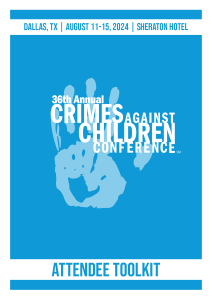Back
Workshop
Marriott
Asphyxiation of Children: The Physiology and Process of Fatal and Non-Fatal Incidents (Part 1)
Monday, August 12, 2024
8:30 AM – 9:45 AM CT
Location: Pegasus AB
Credit Hours: 1.25

Andrea Zaferes (she/her/hers)
VP/Consultant
Lifeguard Systems, Inc- AC
Allyson Cordoni
Nurse Practitioner
Taylor Forensic Consultants
Primary Presenter(s)
Co-Presenter(s)
Asphyxiation is one of the most common causes of pediatric fatal and nonfatal injury accidents, homicides, and suicides worldwide. The presenters will provide attendees with a strong foundation of the pathophysiology, signs/symptoms, and difficulties in diagnosing 12 types of non-aquatic asphyxiation (e.g. positional, traumatic, choking, strangulation, inert gas, confined space), as well as an understanding of why children are particularly susceptible to asphyxiation mechanisms. There will be a discussion of how to use diagnoses of exclusion methods to provide multidisciplinary team members with investigation strategies.
Learning Objectives:
- Define at least eight different types of asphyxiation that can be involved in crimes against children
- Explain the mechanisms and physiology of at least eight different types of pediatric asphyxiation
- State at least ten investigative questions relating to asphyxiation crimes against children

